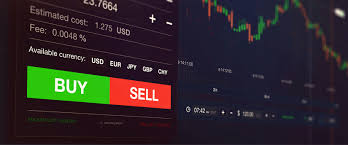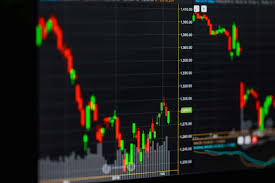October 27, 2025
Understanding Forex Trading A Comprehensive Guide 1702205141

What is Forex Trading?
Forex trading, or foreign exchange trading, refers to the global marketplace for trading national currencies against one another. As the world’s largest financial market, it operates 24 hours a day, five days a week, with a daily trading volume exceeding $6 trillion. In this article, we will delve into the nuances of forex trading, discussing its fundamentals, strategies, and tips for both beginners and experienced traders alike. If you’re interested in further resources, you can check out what is forex trading https://acev.io/.
Understanding Currency Pairs
In forex trading, currencies are traded in pairs. This means that when you trade one currency, you simultaneously buy another. Currency pairs consist of a base currency and a quote currency. For example, in the currency pair EUR/USD, the Euro (EUR) is the base currency, and the US Dollar (USD) is the quote currency. Traders analyze these pairs to speculate on their future movements.
The Importance of the Forex Market
The forex market holds significant importance in the global economy. It facilitates international trade and investment by providing a platform for currency exchange. Businesses engaging in international transactions utilize forex markets to convert currencies, ensuring they can operate smoothly across borders.
Characteristics of the Forex Market
- High Liquidity: One of the most striking features of the forex market is its liquidity. With trillions of dollars traded daily, it is easy for traders to enter and exit positions, making it less susceptible to manipulation.
- Accessibility: The forex market is accessible to anyone with an internet connection, allowing individual traders, institutions, and corporations to participate.
- 24-Hour Market: Unlike stock markets with set opening and closing times, the forex market operates around the clock, allowing for trading at any hour of the day.
- Leverage: Forex trading offers the possibility of leveraging trades, allowing traders to control larger positions with a smaller amount of capital. However, this also increases risk.
Forex Trading Strategies
Success in forex trading is often anchored in effective strategies. Here are a few popular strategies traders utilize:
Scalping

Scalping involves making quick trades to profit from small price movements. Traders employing this strategy often hold positions for mere minutes, executing numerous trades in one day.
Day Trading
Day trading focuses on opening and closing positions within the same day, ensuring that traders do not hold any positions overnight. This strategy can minimize the risk of unfavorable price movements while the market is closed.
Swing Trading
Swing traders look to capitalize on short-term price shifts that occur over a few days or weeks. They rely on technical analysis and market trends to identify potential entry and exit points.
Position Trading
Position trading is a longer-term strategy where traders hold positions for weeks, months, or even years, usually based on fundamental analysis. This approach is less reactive to short-term market fluctuations.
Analyzing the Forex Market
Successful forex trading relies heavily on analysis. There are two main types of analysis used by traders: fundamental analysis and technical analysis.
Fundamental Analysis
Fundamental analysis involves examining economic indicators, interest rates, and news events. Traders analyze the health of an economy, looking at GDP growth, unemployment rates, and inflation data to forecast currency movements. Central bank policies also play a crucial role in determining currency value.

Technical Analysis
Technical analysis focuses on historical price movements and charts. Traders use various tools like moving averages, trend lines, and various indicators to make predictions about future price movements. Pattern recognition is key in this method, allowing traders to identify potential trends and reversals.
Risks in Forex Trading
While forex trading offers substantial rewards, it also comes with inherent risks:
- Market Risk: The risk of unexpected price movements can result in losses, especially in highly volatile markets.
- Leverage Risk: Utilizing leverage can amplify gains but can also yield significant losses if the market moves against a trader’s position.
- Interest Rate Risk: Changes in interest rates can impact currency values significantly, making it crucial for traders to stay informed about central bank policies.
- Operational Risk: This includes risks associated with system failures or issues related to broker operations.
Getting Started with Forex Trading
For those interested in venturing into forex trading, here are some essential steps to consider:
- Educate Yourself: Before diving into trading, take time to understand market dynamics, trading strategies, and the mechanics of trading platforms.
- Choose a Broker: Selecting a reputable forex broker is vital. Look for regulation, fees, trading platforms, and customer support.
- Open a Demo Account: Start practicing trading with a demo account. This allows you to familiarize yourself with the trading environment without risking real money.
- Create a Trading Plan: A well-defined trading plan outlines your goals, risk tolerance, and strategies, providing a guideline for your trading activities.
- Start Trading: Once comfortable, start trading with a live account, beginning with smaller amounts and gradually increasing as you gain experience and confidence.
Conclusion
Forex trading presents exciting opportunities for those willing to invest the time and effort to learn the market. By understanding currency pairs, employing effective strategies, conducting thorough analysis, and managing risks, traders can navigate the complexities of this vast marketplace. Whether you’re a novice or an experienced trader, continuous education and adaptability are key to thriving in the ever-changing world of forex trading.
